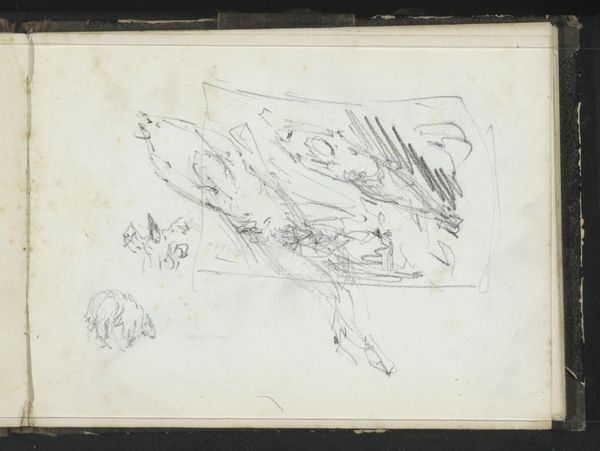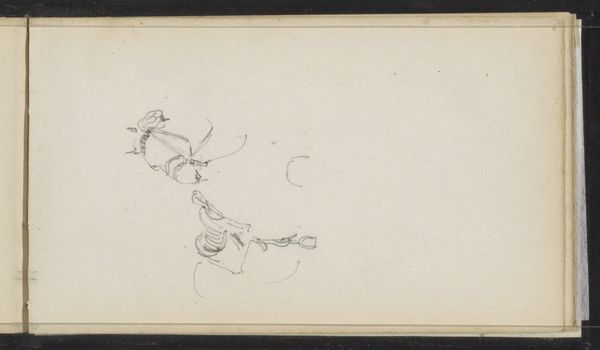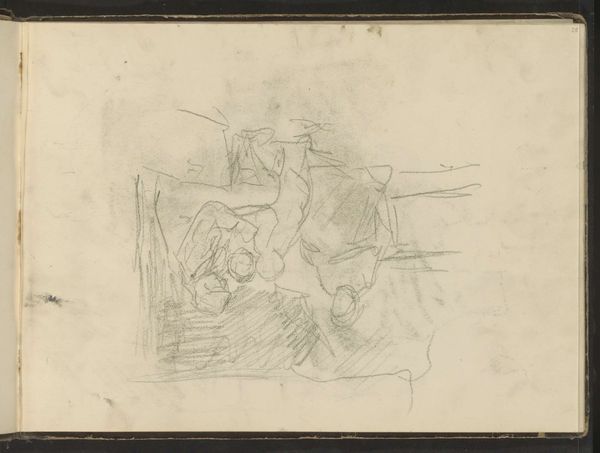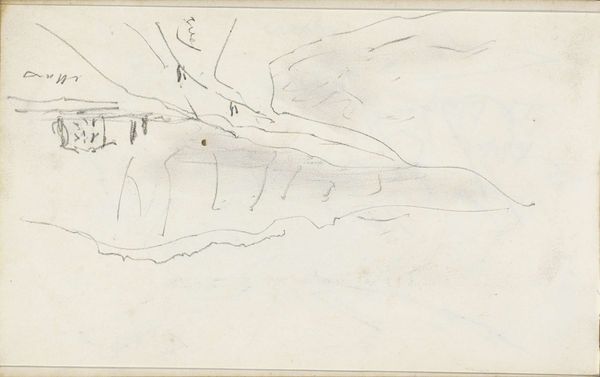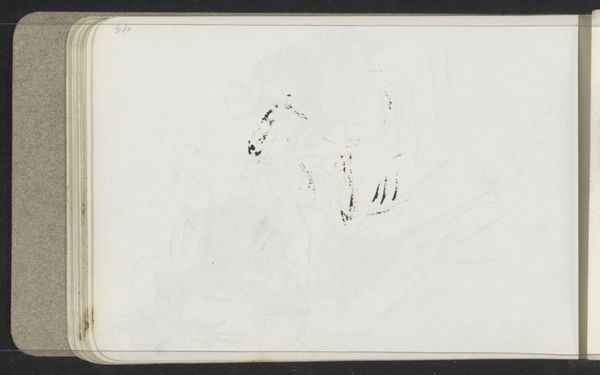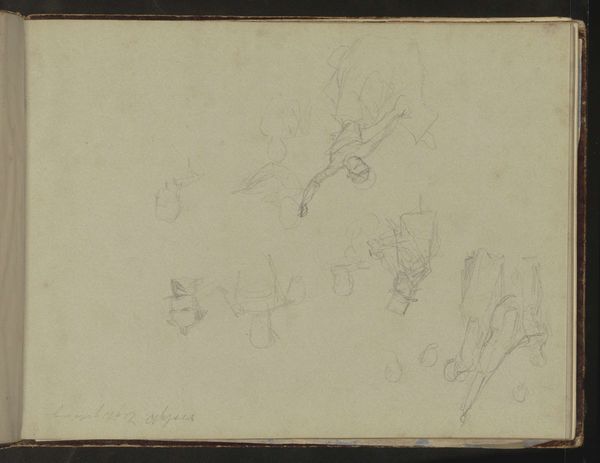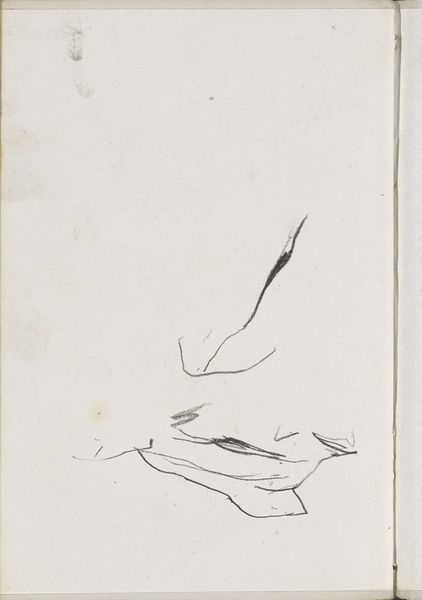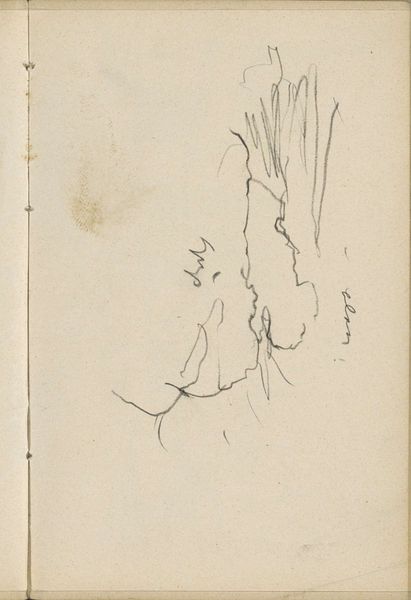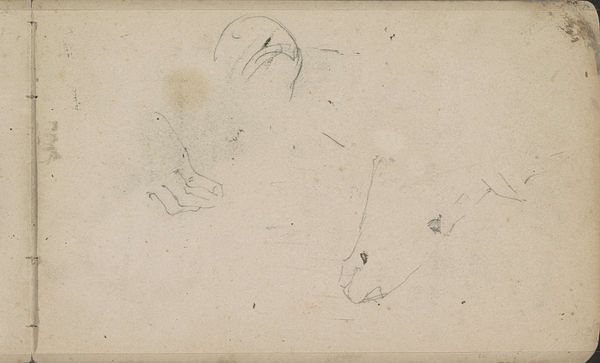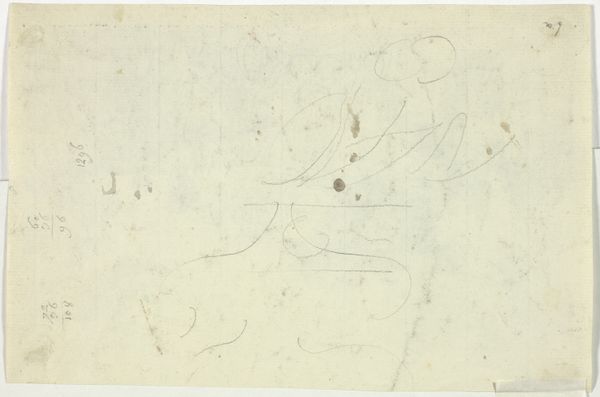
Copyright: Rijks Museum: Open Domain
Curator: Looking at this sketch, I immediately feel the dynamism, the sense of capturing fleeting thoughts on paper. Editor: Indeed. We are observing "Two Women's Heads" by Isaac Israels. It's an ink drawing, dating sometime between 1875 and 1934, held here at the Rijksmuseum. Curator: The seemingly effortless quality really strikes me. It looks like he's captured something deeply intimate about these women, perhaps an off-guard moment between them. It sparks an investigation of the social context around how women have been portrayed, often through the male gaze. Did Israels, working when he did, resist or participate in that gaze? Editor: That's a compelling point. Israels, deeply embedded in the art world of his time, certainly engaged with portraying modern life. We see this sketch as a kind of preliminary work – loose, immediate, perhaps intended for a larger composition or simply an exercise of observation. Consider how the drawing style might reflect the broader movement towards impressionism and capturing fleeting moments in art. Curator: And that "fleeting moment" idea—does it apply equally to the women represented? We must interrogate the assumption that the lives of women at this time were somehow less "fleeting," when women’s existence were deeply entrenched in gendered social constructs. What liberties do their economic backgrounds afford, if any, in experiencing said fleeting moments, and how does this then play out in its representation? Editor: It certainly provides ground for considering art's role in mirroring, shaping, and potentially critiquing societal norms. The seemingly quick rendering shouldn't distract from thinking about its production within these complex systems of seeing and being seen. The museum's presentation of these sketches might implicitly highlight or flatten those socio-political intricacies in subtle but real ways. Curator: I agree. It's a reminder of how intertwined the aesthetic and the political truly are. Israels gives us an intimate glance into his subjects but the true subject may also include class dynamics of his time. Editor: Indeed, leaving us much to think about beyond the surface of the sketch.
Comments
No comments
Be the first to comment and join the conversation on the ultimate creative platform.
